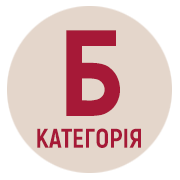ЛІНГВОКОГНІТИВНІ ОСОБЛИВОСТІ КІНОДИСКУРСУ ТВОРІВ КВЕНТІНА ТАРАНТІНО (НА МАТЕРІАЛІ ФІЛЬМУ “БЕЗСЛАВНІ ВИРОДКИ”)
DOI:
https://doi.org/10.32782/2410-0927-2020-12-20Ключові слова:
кінодискурс, підтекст, саспенс, інтертекстуальність, мовний кодАнотація
Стаття присвячена аналізу особливостей кінодискурсу творів режисера Квентіна Тарантіно на матеріалі фільму “Безславні виродки”. Поняття “кінодискурс” розглядається як комплексне, що включає в себе велику кількість аспектів та складових, а саме вербальних, невербальних та екстралінгвальних. У статті досліджено специфічні риси кінодискурсу цього фільму як окремо взяті, так і ті, що формують неповторний режисерський стиль та повторюються в багатьох фільмах Тарантіно. На думку авторів, аналіз кінодискурсу та сам факт виділення його серед інших видів дискурсу є ключовим для розуміння багатьох факторів комунікації, оскільки кіно як мистецтво є засобом відтворення реальності та соціального пізнання. Останні ж, зі свого боку, піддаються впливу кінодискурсу. У статті доведено, що головними та яскраво вираженими рисами кінодискурсу цього фільму є інтертекстуальність, цілісність, широке використання підтексту та створення ефекту саспенсу, при чому більшість із цих ознак є взаємопов’язаними та виступають як результат впливу окремих мовних явищ. Ці характерні риси виступають як засоби передачі інформації (вербальної, невербальної або ж екстралінгвальної), допомагають правильно інтерпретувати внутрішні почуття мовців у певній ситуації та зрозуміти їхнє бачення цих ситуацій, сприйняття інших мовців чи об’єкта дискусії. Автори наголошують, що всі раніше згадані риси, а саме: використання багатьох мов, перемикання мовних кодів, застовування вербальних маніпуляцій, велика кількість сюжетних ліній, які зрештою мають об’єднатись в одне, формують структуру, стиль та розуміння кінокартини. Кінотекст є важливою складовою в синтетичній структурі кіно, поруч із такими значущими для смислової та естетичної завершеності екстралінгвальними складовими, як візуальний ряд, звукова інформація, візуальні та механічні спеціальні ефекти, комп’ютерна графіка та ін. Стаття звертає увагу на важливість аналізу кінодискурсу у світлі збільшення впливу, і, як наслідок, популярності й релевантності мистецтва кіно, яке на сьогодні є не лише розвагою чи частиною масової культури, але й засобом впливу на комунікацію та соціальне пізнання; а окремі фільми є важливою складовою світового кіноресурсу та кінодискурсу.
Посилання
Androutsopoulos, Jannis. 2012. “Introduction: Language and Society in Cinematic Discourse”. Multilingua 31: 139–154. Accessed February 3, 2020. doi: https://doi.org/10.1515/multi-2012-0007.
Bart, Roland. 1994. Ot proizvedeniya k tekstu. Izbrannye raboty: Semiotika. Poetika. Moskva :Progress. 413–423
Belykov, Vladimir and Leonid Krysyn. 2001. Sotsyolynhvystyka : uchebnyk dlia vuzov. Moskwa : Ros. hos. humanyt. un-t.
Bozhko, Olena. 2017. “Atmosfera «saspens» yak dominantna oznaka literaturnoho zhanru «fentezi»”. Naukovi zapysky Natsionalnoho universytetu «Ostrozka akademiia». Seriia «Filolohichna» 67: 51–54. Accessed February 3, 2020. doi: 10.25264/2519-2558-2017-67-51-54.
Dijk Van, Teun A. 2000. Yazyk. Poznanye. Kommunykatsyia. Blahoveshchensk: BNK im. Y. A. Boduena de Kurtene.
Hrydasova, Olena. 2014. “Kinodyskurs yak obiekt navchannia kinoperekladu”. Visnyk Zhytomyrskoho derzhavnoho universytetu 74: 102–107.
Jaeckle, Jeff. 2013. Film Dialogue. Edited by Jeff Jaeckle. London; New York : Wallflower Press.
Kovalenko, Iryna. 2011. “Intersemyotycheskyi perevod v mezhkulturnom aspekte: postanovka problem”. Izvestyia Volhohradskoho hosudarstvennoho pedahohycheskoho unyversyteta 2: 50–53. Accessed February 3, 2020. doi: 10.22363/2312-9182-2019-23-2399-414
Kovaliv, Yurii. 2007. Literaturoznavcha entsyklopediia. U 2-kh t. Kyiv : VTs «Akademiia».
Kristeva, Julia. 1974. La Révolution du langage poétique. L’avant-garde à la fin du XIXe siècle:Lautréamont et Mallarme. Paris : Éditions du Seuil.
Krysanova, Tetiana. 2014. “Osnovni pidkhody do rozuminnia poniattia «kinodyskurs»”, Naukovyi visnyk Skhidnoievropeiskoho natsionalnoho universytetu imeni Lesi Ukrainky 4: 98–102.
Kukharenko, Valeria. 1988. Interpretatsyia teksta. Moscow: Prosveshchenie.
Samkova, Maryya. 2011. “Kynotekst i kynodyskurs: k probleme razgranychenyia ponyatyi”. Fylologycheskye nauky. Voprosy teoryy y praktyky 1: 135–137.
Schmidt, Johann and Markus Kuhn. 2014. “Narattion in Film”. In Handbook of narratology, edited by Peter Hühn, Jan Christoph Meister, John Pier, Wolf Schmid. Volume 1: 384–405. Berlin: De Gruyter.
Slyshkyn, Gennadyi and Marya Efremova. 2004. Kynotekst: opyt lingvokulturologycheskogo analyza. Moskwa: Vodolei Publishers.
Tarantino, Quentin G. 2009. Inglourious Basterds. Film script. IMSDb. https://www.imsdb.com/scripts/Inglourious-Basterds.html (accessed September 11, 2020).
Tsyvyan, Yuryi. 1984. “K metasemioticheskomu opisaniyu povestvovanyia v kinematografe”. Trudy po znakovym systemam. Uchenye zapiski. Tartus. gos. un-ta 17: 109–121.
Voroshylova, Marya. 2007. “Kreolizovannyi tekst : kinotekst”. Politicheskaya lingvistika 22: 106–110.
Wollen, Рeter. 1976. Signs and Meaning in the Cinema. Bloomington: Indiana University Press, 116–154.
Zaichenko, Svetlana. 2013. “K voprosu o znakovoi neodnorodnosti kinodyskursa”. Vestnik Chelyabinskogo gosudarstvennogo universiteta 2: 96–99.
Zaretskaia, Anna. 2012. “Osobennosti realizatsyi podteksta v kinodiskurse“. PhD diss., Cheliabynsk: Abrys.
Zviereva, Olha. 2006. “Suchasnyi kinodyskurs: spetsyfika ta osoblyvosti katehorialnoho potentsialu”. Naukovi zapysky KhEPU 4: 114.







